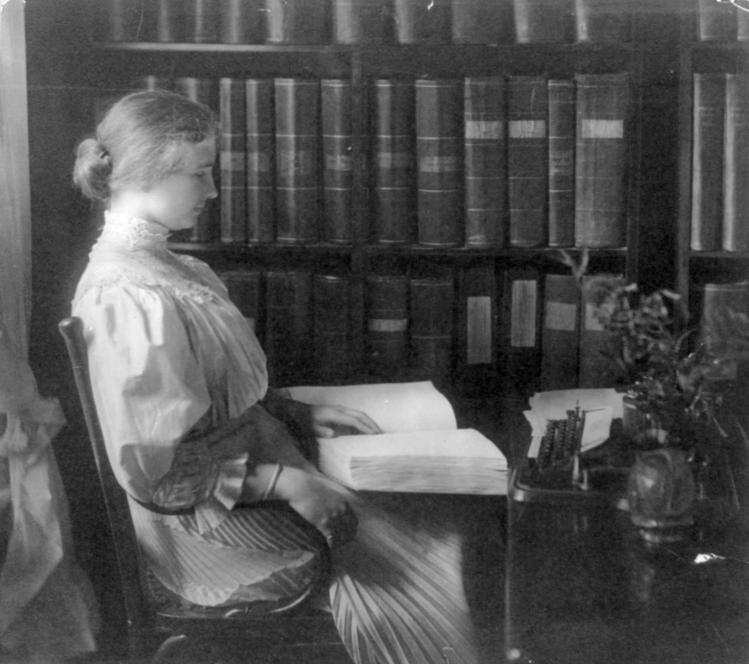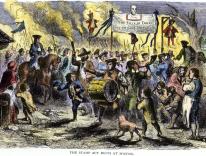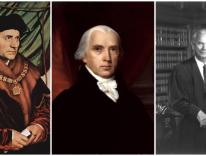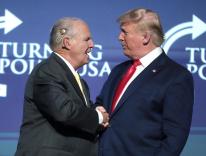
It was late 1952, and the World Council of Peace was organizing a conference in Vienna. Diplomats and leftist scholars planned to converge on the Austrian city to denounce America’s aggressive stance toward the Soviet Union, and to advocate for Joseph Stalin’s vision of a “peaceful coexistence” between the two. Just one month before the gathering, the organizers announced they had received an endorsement from an American icon: Helen Keller, then seventy-two years old.
Keller’s leftist sympathies were known to anyone who had been paying attention. For decades, she had publicly extolled Vladimir Lenin as one of the greatest figures of her time. More recently, though, people close to Keller had been urging her to keep those opinions quiet. In a New York Times profile occasioned by her seventieth birthday, she seemed to take this advice, denouncing communism as “another kind of tyranny over human minds and bodies.” But as the historian Max Wallace writes in his trenchant After the Miracle: The Political Crusades of Helen Keller, the Times article didn’t represent Keller’s true views. The profile was likely arranged by one of her powerful friends in the philanthropy world in a bid to rehabilitate her image.
But Keller’s radicalism always tended to resurface. When her colleagues at the American Foundation for the Blind heard about her support for the Vienna conference, one of them dispatched a telegram to the others. For “GOD’S SAKE,” it read:
STOP ANY FURTHER ATTEMPTS ON THE PART OF HELEN KELLER OR ANYONE ELSE CONNECTED WITH THIS INSTITUTION TO WRITE ANY MESSAGE WHICH WOULD BE READ AT THE WORLD COUNCIL TO MEET IN VIENNA DECEMBER 10.
Ultimately Keller did agree to sign a clarification, asserting that she did not “believe in despotism in any form.” But she declined to offer a blanket denunciation of Soviet Communism.
Many decades later, there’s a disconnect in the way we remember Helen Keller. Her long, extraordinary career (she lived to be almost ninety) as an international activist was sustained by an incredible work ethic. She was so deeply invested in politics that she routinely read newspapers in several languages. She authored fourteen books, and delivered hundreds of speeches around the world. But for most of us, Keller’s name conjures a sentimental image of a six-year-old girl at a water pump, her teacher Annie Sullivan spelling out the word “water” on her palm as Keller experiences the first flash of linguistic revelation. That scene—popularized in the 1962 film The Miracle Worker—puts Sullivan at the center of the story of Keller’s life, and makes Keller a passive recipient, rather than an active agent, of social progressivism. One of the questions Wallace sets out to answer in After the Miracle is how that came to be.
Leftist radicalism was hardly part of Keller’s birthright. She was born in northwest Alabama in 1880 to a wealthy family. Her father had been a captain in the Confederate army and was distantly related to Robert E. Lee. He was also rumored to be the first Ku Klux Klan member in Alabama. But Keller was cut off from that environment at a young age. Annie Sullivan took over her education when Keller was six and brought her to the Perkins School for the Blind in Massachusetts the following year.
Keller was already famous by the time she reached adulthood. She was not the first deafblind person to learn to read and write, but the pace at which she acquired these skills, and the degree of her eloquence, was unmatched by others with her disabilities. By the time she was a teenager, she had spent time with William James, W.E.B. Du Bois, Mark Twain (who would become her dear friend), and Grover Cleveland.
Keller announced her socialist views to the world in 1912, several years after her graduation from Radcliffe College at Harvard. In a profile first published in the St. Louis Post-Dispatch and later syndicated across the country, Keller decried the “social blindness” of Americans who failed to see “the fundamental conditions underlying relations between the workpeople and their employers.” When the reporter suggested that poverty was applauded in the New Testament, Keller fiercely corrected him. When Christ said, “blessed are the poor,” she explained, he only meant they’d be blessed in the future as compensation for their suffering.
Wallace, a journalist-turned-historian, has produced an eclectic body of work. He’s published volumes on Muhammad Ali’s fight with the Vietnam draft board, the death of Kurt Cobain, and Henry Ford and Charles Lindbergh’s support for the Nazis. Here his treatment of Keller’s politics is deft and thorough; it’s also sympathetic. As Wallace shows, there’s been a tendency, going back to Keller’s earliest activist days, to dismiss the radicality of her views in ableist terms—that is, by suggesting that Keller couldn’t think for herself. Like scholar Kim Nielsen, author of the 2004 book The Radical Lives of Helen Keller, Wallace simply takes Keller at her word.
The 1910s were Keller’s busiest decade as an activist. She campaigned for women’s suffrage and against America’s entry into the First World War. In both cases, her explanations were rooted in economics: she hoped that giving women the ballot would lead to socialism, and she denounced the conflict in Europe as a “capitalistic war,” calling for a “general strike” to halt war preparations. Her socialism, in turn, was grounded in her faith. From age sixteen onward, Keller was devoted to the teachings of the Swedish mystic Emanuel Swedenborg, whose devotees had long been linked with Christian socialism. Later in life Keller referred to Christ as “Him who stood with the oppressed and the defrauded.” Her faith also informed her advocacy for civil rights. “How dare we call ourselves Christians?” she asked in an open letter to the NAACP in 1916, noting the prevalence of lynchings that took place in the South. “The outrages against the colored people are a denial of Christ.”
Wallace’s account is hardly a hagiography, though. Keller’s worst moral blunder also occurred in the 1910s—a glaring departure from her usual stance of compassion. In 1915, Keller voiced support for eugenics. Writing in a Pittsburgh newspaper, she defended the decision of a surgeon and a mother to let a disabled newborn die in the hospital, rather than performing a dramatic surgery to save the boy’s life. Wallace isn’t the first to point out that such views were not uncommon among the Progressive Era’s socialist Left. They developed out of an idealistic—but horribly misguided—sense that eugenics could alleviate suffering in future generations. Keller’s comments follow this idealistic tack, describing the surgeon’s decision as a “service to society” as well as to the child, who she said was “spared from a life of misery.” There’s an undeniable cold-bloodedness in her remarks. (Keller did later reverse his stance on eugenics, and was among the first Americans to denounce Henry Ford for his anti-Semitism.)
Keller worked tirelessly as a young woman, but her projects didn’t always produce financial rewards. Money was often a problem, and she was sometimes forced to make compromises to support herself and Sullivan. On one level, she resented modern philanthropy as it was practiced by the Carnegies and Rockefellers, seeing their largesse as a symptom of the political and economic ills that concentrated wealth in the hands of a few. “I regard philanthropy as a tragic apology for the wrong conditions under which human beings live,” Keller wrote to a friend in 1944. At the same time, she couldn’t help but depend on it in her own life. A Standard Oil executive had helped fund her college education, and in 1912, she reluctantly started accepting a $5,000 yearly stipend from Andrew Carnegie. (Ironically, this money went a long way toward supporting her radical activism.)
In 1924, Keller herself started working in philanthropy full time as the chief fundraiser for the American Foundation for the Blind (AFB). This marked the end of her political activity for some fifteen years. Whether her silence regarding politics was a condition imposed on her or a decision she made voluntarily is impossible to know, Wallace argues. Either way, the effect was the same.
Another of the strengths of Wallace’s book is the light it shines on Keller’s political resurgence during the 1940s. Even leftists have tended to overlook this part of her biography. When the labor historian Philip Foner compiled a selection of Keller’s political writings for a Marxist press in 1967, most of his selections were drawn from the years between 1911 and 1925. “This roughly fifteen-year chapter of her life has often been portrayed as a ‘phase’ that Helen eventually outgrew,” Wallace writes. Even Nielsen had concluded that Keller became a “cold war liberal” later in life.
Wallace, by contrast, makes a persuasive case that Keller’s views never really changed—if anything, she moved further to the left. Though Keller criticized Stalin, and described the Moscow Show Trials of 1936 as “sickening,” she remained sympathetic to the Soviet project. In 1945, Keller visited the Soviet consulate in Manhattan to celebrate the twenty-eighth anniversary of the Bolshevik revolution. “Finally I am on Soviet Soil,” she said upon entering. Based on Keller’s changing attitudes toward World War II—she had opposed American intervention in 1940, then changed her mind in 1941 after Germany invaded the Soviet Union—Wallace argues that Keller must have been a Fellow Traveler, an unofficial member of the Communist Party USA. (1941 was also when the American Communist Party reversed its stance on the war.)
Ultimately, Keller’s duties at the AFB reined in her politics yet again. In the late 1940s, it was widely reported that Keller was being investigated by the House Un-American Activities Committee. This put the AFB leadership on edge, since it threatened their fundraising. Together with AFB trustees, the director effectively halted Keller’s political work in the late 1940s, according to documents Wallace cites.
Considering the efforts made to soften Keller’s public image throughout her life, it’s hardly surprising that her radical politics are little remembered more than five decades after her death. To a large extent, her legacy has been shaped by the same economic forces that she railed against for so many years.
Show-business executives were perennially drawn to Keller. For obvious reasons, they preferred to frame her life as a simple story about overcoming disabilities, not as an ongoing struggle against capitalism, sexism, and racism. This pattern took hold as early as 1919, when the silent film Deliverance was released. It culminated in 1962, when The Miracle Worker netted two Academy Awards: Anne Bancroft won Best Actress for her portrayal of Annie Sullivan, and Patty Duke won Best Supporting Actress for playing Keller.
But as Wallace argues, the movies are not uniquely to blame for obscuring Keller’s socialism. Biographer Joseph Lash’s seminal Helen and Teacher also downplayed the evidence of Keller’s communist sympathies in the 1940s and ’50s—in some cases discarding material that went against his thesis. Wallace presents new evidence that Lash had signed a contract with the AFB, giving the organization editorial control over the biography in exchange for exclusive access to Keller’s papers. Later biographers simply accepted Lash’s characterizations at face value.
In exhuming Keller’s true politics, Wallace has given us a fuller picture of one of the twentieth century’s great Christian radicals. In his telling, Keller is notable for much more than her communicative abilities. Despite occasional moral lapses, she lived a life of true integration. Her love of Christ; her critiques of capitalism, racism, sexism, and ableism; and her work as an activist—all of them, Wallace shows, came from the same place.
After the Miracle
The Political Crusades of Helen Keller
Max Wallace
Grand Central Publishing
$30 | 416 pp.
Please email comments to [email protected] and join the conversation on our Facebook page.
Previous Story
Developing the Voice of the Laity
Next Story
How Not to Defend Liberalism


